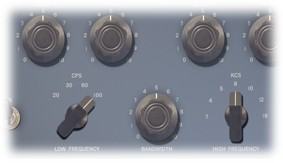Santa Cruz, CA
95060
Teaboy started not as a commercial service, but more of an idea some time in 2003. The idea was to find a way to take recall notes in a digital format which could then save more time and provide more accuracy. I believe it was the first attempt to document the parameters of a Lexicon 960L that inspired me, along with the ache left in my hand, to find a better way. It started with taking existing mechanical drawings used for conventional recall sheets and importing them into Excel. From there know markers and shapes for buttons could be added to replace the pencil marks normally used. This increased accuracy of traditional recall sheets which were always prone to error and interpretation, as well as saving time now that data could be copy/pasted. No more starting from scratch. But this was still a bit cumbersome and not an ultimate solution.

Soon the trend began that we had to start working in our home studios more and more, and could not always rely on the trusty staff of a large commercial facility to handle the task of taking recall notes. This often meant in addition to the 12-16 work day, I would have to spend an additional couple of hours just taking notes. Not only in this industry were we working for less money, but having to spend more time as well.
To solve this problem and essentially make more money by requiring less time per project, I began writing the beginning of what is now Teaboy. It was not very fancy. A few obscure knob shapes and sliders. But compared to what we had been used to, it was monumental. Slowly it evolved into real images and graphics. This was a huge boost for recall accuracy. No more guessing where the knob was compared to the mechanical drawing. It was now as good as a real photograph.
Now I know what many are saying. Just take pictures. And I assure you I have been down this route. I, like others bought a camera with the intent that I would save loads of time simply with pictures. But I, like others quickly learned how untrue this is. Real photos are far less accurate and reliable as mechanical drawings. You had rooms that were too dark which would result in settings not being viewable, or you used a flash which results in reflected light washing out the settings. And with many pieces of gear you either had to take multiple pictures to capture (like a Pultec EQ), or you had gear with multiple menus to display such as the AMS 1580.
It seemed the ultimate solution. The accuracy of real pictures, but without the drawbacks from photography. In addition the benefit of repeating data and only having to notate the changes. No more starting from scratch each project. If a knob was not moved, it didn't have to get documented.
Well it did not take long before clients started noticing the software and becoming more fascinated with it than the music. Always asking where they could buy the software. Some even insisting that they sell it to me right there. I decided to see how this would fair as a commercial product. It was not meant to be one, and it was far from something usable by the general public. That would require a great deal o work and financing. So we bought a booth at the 2008 AES convention to see if there was enough interest. Not only was the interest great, Pro Audio Review awarded Teaboy a 2008 PAR excellence award. For a service that was not even finished yet.